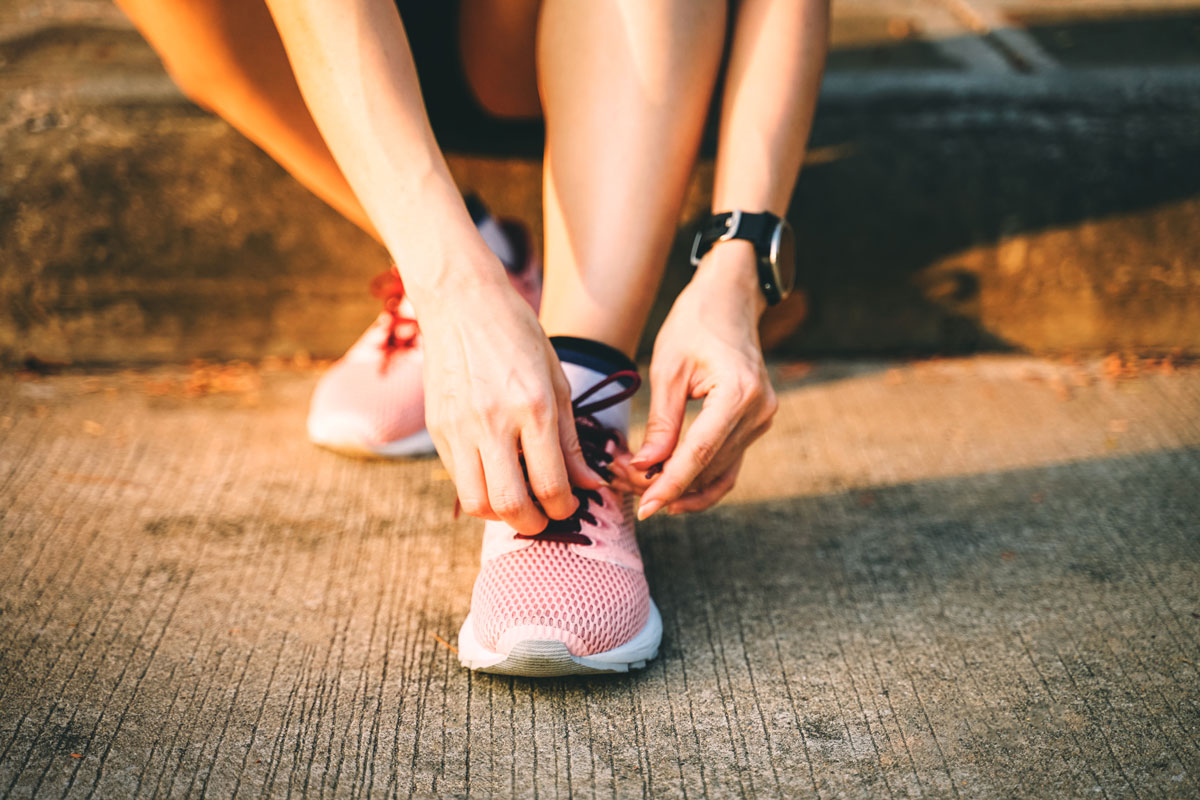Even though the 2020 running of the UConn Health Half Marathon, 10K and 5K is taking a nontraditional route, runners will cover distances that, for many of them, require some training.
Instead of a single time and place to for the participants to run together, they’ll run on their own at a time and place of their choosing between June 4 and June 7, and record their times on an online platform the Hartford Marathon Foundation is providing.
But no matter when and where, 13.1 miles is still 13.1 miles. And preparing for that run during a pandemic comes with some new precautions to take.
Not the least of which is the continuation of the mantra we’ve been hearing for months now: social distancing. While it’s reasonable to run without facial covering to maintain breathing efficiency, it’s only responsible to do so when keeping a safe distance.

“I tell people, adding a little extra distance than 6 feet from other people would be the way to go, maybe doubling that, 12 feet, giving yourself a little extra gap between people is an added safety measure,” says Dr. David Banach, UConn Health’s hospital epidemiologist. “And if you’re going to be in an area where you’re going to be close to others, if there’s traffic or you’re running up to an intersection, then having a mask you can flip up if needed is an extra layer of caution.”
The extra distance is less about the risk of perspiration landing on a passer-by and more about the heavy breathing during exercise that possibly could propel our droplets beyond the 6-foot radius.
Absent a consensus set of exercise-induced symptoms associated with COVID-19, and with much still not understood about this coronavirus, the practice of listening to your body perhaps has added importance.
“It’s helpful to know what level of fatigue you’d expect after a long run, what level of joint pain you’d expect to have,” Banach says. “And then if you start to see things that are unusual or beyond expectation, that would raise a red flag that there’s something else going on.”
Perspiration on clothing has not been shown to make someone more likely to expose others to infection. But if while on your run you want to stop at a convenience store for a drink, that’s the time to put the mask on again. That recommendation applies globally, whether you’re training for a competitive race, exercising at a more casual pace, or not exercising at all.
“If you’re sick, try to avoid any sort of contact,” Banach says. “For asymptomatic people, wear that mask or face covering when in the proximity of other people. That’s the best way to prevent the spread of infection.”
If you have a running partner you don’t live with, the best approach is to find a path where you can distance yourselves from each other, such on opposite sides of streets that don’t get much traffic. Otherwise, running solo is safest.
Pandemic or not, other best practices for training for a distance running event would apply.

“Make sure that there’s at least some medical clearance, are they cardiovascularly fit enough to do what they intend to do,” says Dr. Matthew Hall, an injury prevention expert with UConn Health’s Orthopedics and Sports Medicine practice in Storrs. “Depending on their medical history, they may need further cardiac testing workups to be sure they can safely return to whatever level of exercise they’re planning on doing.”
When training or getting back into shape, Hall recommends having realistic expectations, going at a safe pace, and giving yourself enough time to slowly build up your fitness.
“A lot of patients say, ‘I’m going to run this half marathon on this date or this 10K on this date,’ and they maybe haven’t even started to jog or run at all,” Hall says. “So they have a very specific timeline, and if they fall off that timeline a little bit, their tendency is to push things too fast and they end up with overuse problems, tendonitis, stress fracture, or a flare-up of some underlying degenerative problem like arthritis.”
But you don’t have to be in training for competitive distance running to benefit from regular exercise, and both Hall and Banach encourage their patients to break a sweat.
“Getting outside, exercising – whether it’s inside or whether it’s outside – I think is even more important, obviously for physical health and cardiovascular health, but really from a mental health standpoint, because I think all of us struggle with how our daily lives have been disrupted,” Hall says.
Banach, himself a runner who plans to run the 10K in the UConn Health event, says outdoor exercising has always been his preference. That’s the case even more so this year.
“Maintaining your nutrition and overall health is important in preventing illness, and physical activity’s going to be a part of that,” he says. “It’s more difficult to do that indoors, being constricted by space limitations. But now that you can get outside, I tell my patients that outdoor activity is the way to go.”
Learn more about the UConn Health Half Marathon, 10K and 5K, June 4-7.
Learn more about UConn Health Orthopedics and Sports Medicine.



